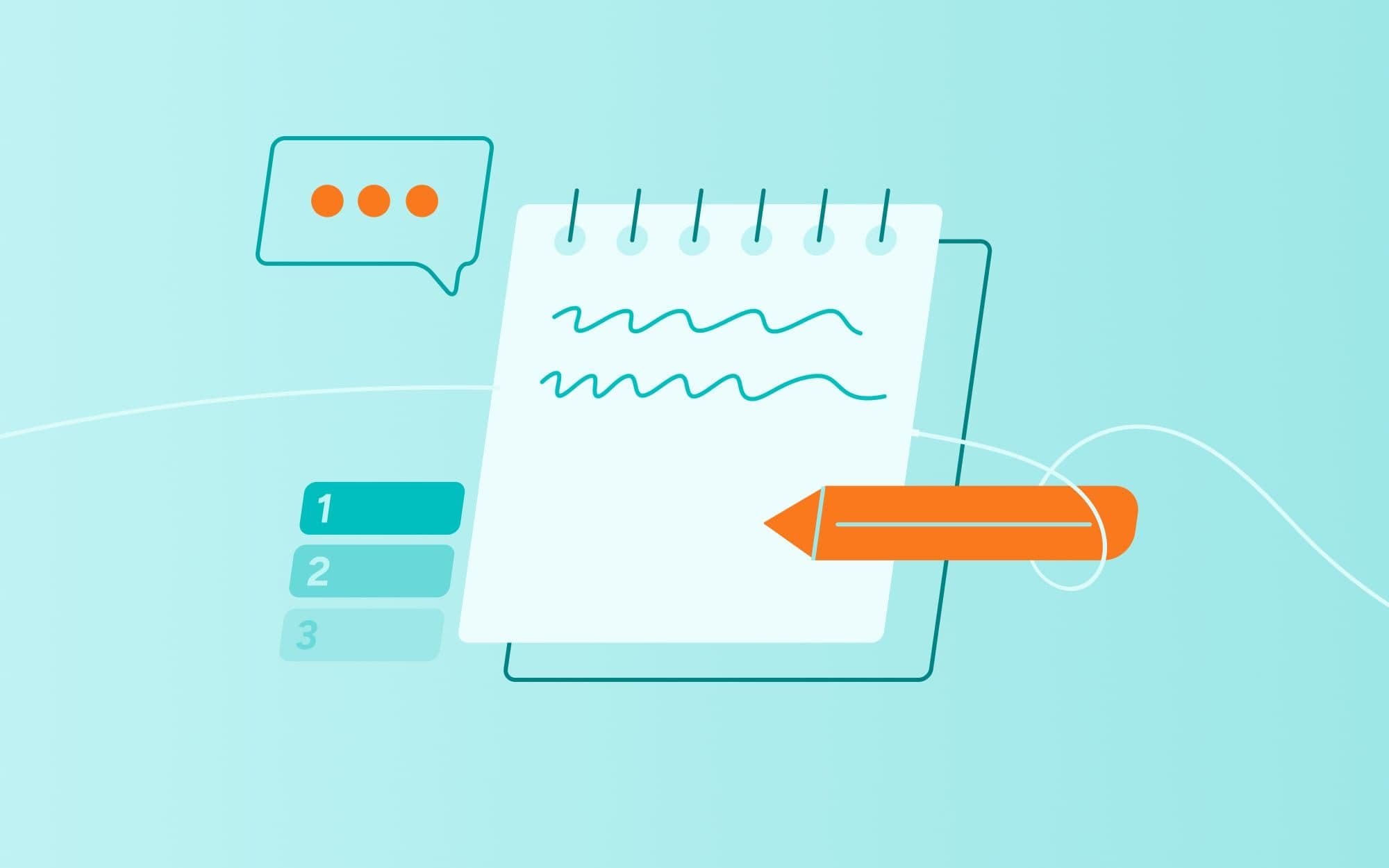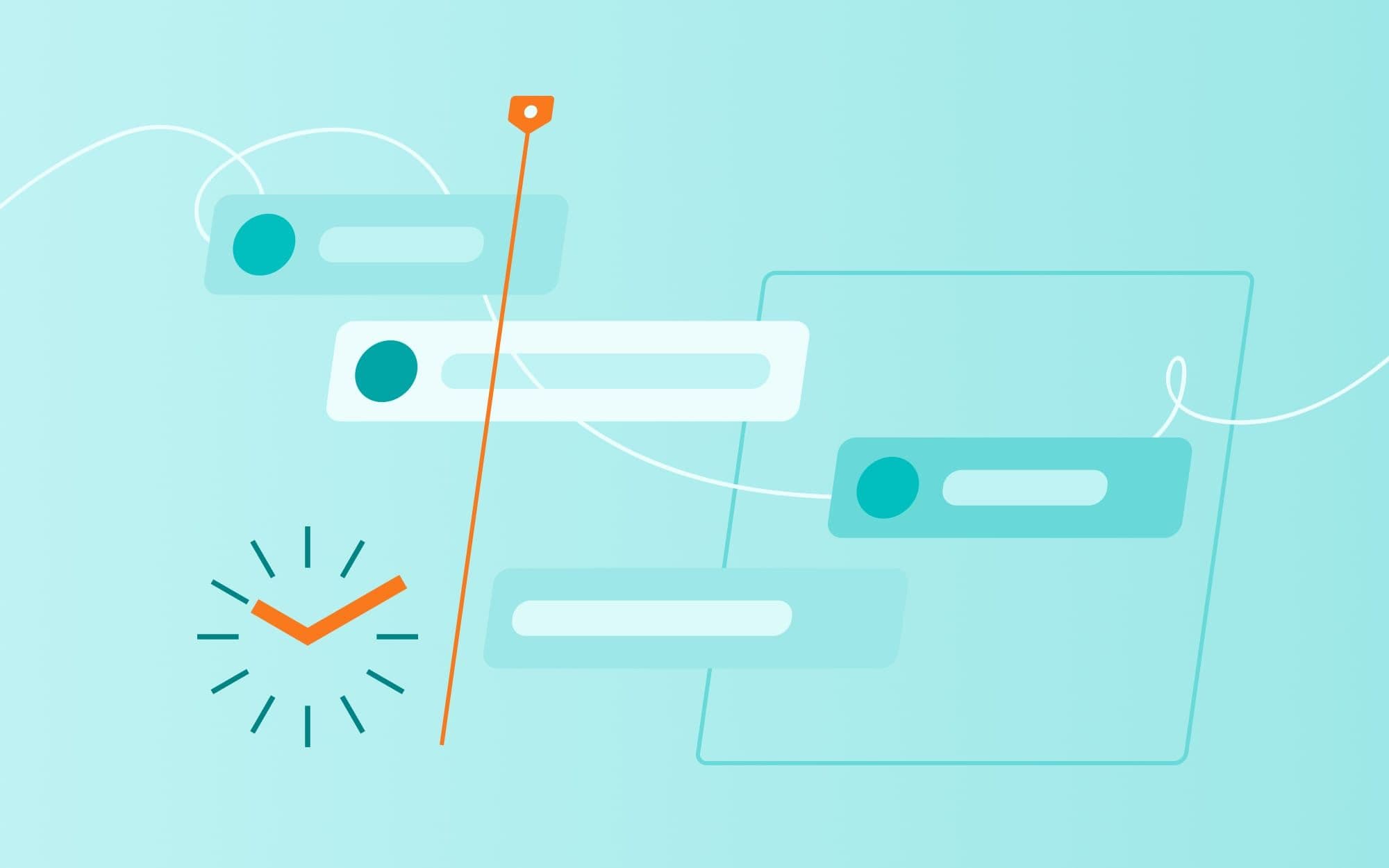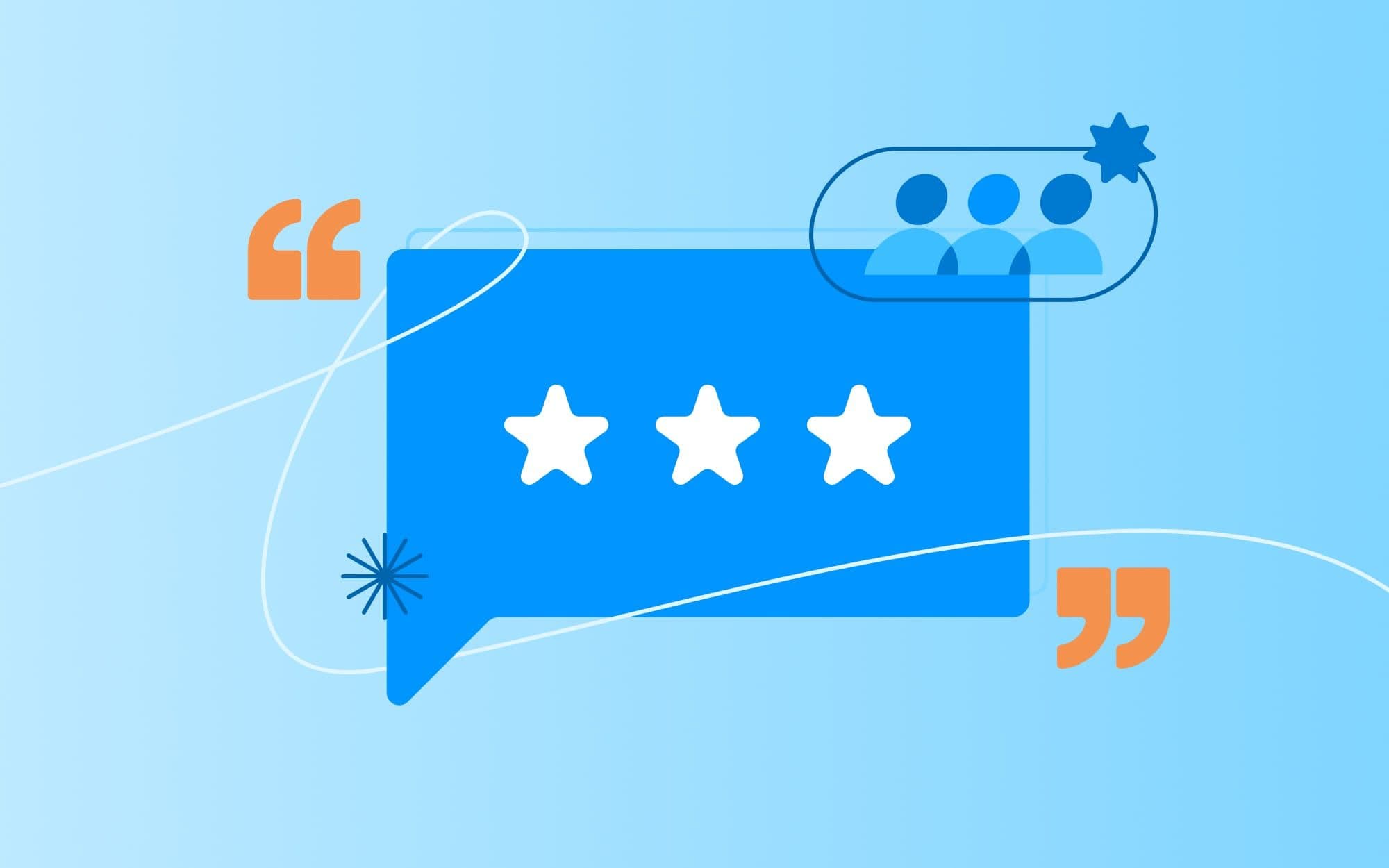Key strategies for taking notes
Different situations call for different kinds of note-taking. You probably wouldn’t choose to make a detailed outline to capture a brainstorming session, or handwrite notes that you need to share with five other people via email after a meeting.
We’ll walk through five different scenarios and how you can tailor your note-taking strategy to meet your professional goals.
1. Team meetings
The best team meetings result in a clear, shared understanding by everyone involved and actionable items.
When taking notes in team meetings or collaborative environments, you should focus on:
Facts: (Example: Jenna is the creative lead on this project)
Issues: (Example: There is too much work to get done by the deadline)
Decisions: (Example: We will break this project up into smaller, more manageable chunks)
Action plans: (Example: The project manager and creative lead will determine how to break this project up, then the project manager will schedule a meeting to discuss how to distribute that work)
Questions and answers: Take note of questions team members bring up during the meeting and the answers that are given
For maximum efficiency, use a note-taking tool that allows you to easily capture and share notes (like Google Docs ) or try turning notes into tasks and to-do lists.
Mind maps can also be used for meeting management. An online mind mapping tool like MindMeister can help you take meeting minutes and then create and assign tasks within the mind map, in real-time.
To use the above mind map template, simply click on the “Copy map” button in the left sidebar. Don’t have a MindMeister account yet? You can sign up for free now.
2. One-on-one meetings
Sometimes you want to take notes in one-on-one meetings – maybe you’re having coffee with your mentor or heading into a performance review. These are more intimate learning environments where you’re engaged in discussion but still want to capture what you hear.
Taking notes in these situations is a balance. You want to record information without putting a laptop-shaped wall between you and the other person. And too much focus on your notes could make you seem distracted or inattentive.
Prioritize that personal connection by ditching your laptop as a note-taking device and opt for a small, unobtrusive notebook.
Tomasz Tunguz, a venture capitalist with Redpoint and former Google Employee, writes that when he worked at Google, “I carried a laptop to every meeting I went to. I typed notes, jotted down action items, and distributed the minutes of almost each one of my meetings.”
When he started working at Redpoint, “outside the rainbow bubble of the Googleplex very few people take notes on laptops during meetings. It’s just impolite. People wonder if you’re typing emails (which I often was).”
Sometimes a personal connection is more important than recording every single word. Don’t worry, though, you can still capture what was said: immediately after the meeting is over, write down everything you talked about while it’s still fresh in your mind.
3. Brainstorming sessions
Brainstorming sessions can be a flurry of activity with ideas flying. When your team brainstorms, you need to be able to record a lot of information quickly, capture unusual concepts and combine, refine and build on those ideas. You need the freedom to be able to record whatever comes up, be they words, sketches, diagrams, photos or other visual elements.
Mind maps are great for brainstorming because they let you capture notes in a flexible format that doesn’t limit you to a linear flow of words.

You can use good old-fashioned paper or a whiteboard, but an online mind mapping tool allows you to share mind maps with the team or save maps so you can come back to them later. They also offer an endless amount of space, so your map can be as big as it needs to be.
4. Interviews
Interviews can take lots of forms. Maybe you’re talking to candidates for a new position you’re hiring or interviewing an expert for a blog post. Perhaps you’re conducting interviews as part of user research. In these situations, look to journalistic methods of taking notes for tips.
“Write down all the questions you have beforehand,” suggests Roy Peter Clark, senior scholar at the Poynter Institute. “At the end of the interview, scan your questions to see if there’s anything you didn’t cover. Now’s the time to ask.”
Clark also says you should record the interview but not rely on the recorder completely. “Even if you have a chance to record an interview, back it up with notes in your notebook,” he says. “You never know when technology will fail you.”
Taking notes on what you observe in addition to what’s said will also help. “Divide your note-taking areas into two sections,” writes journalist M.T. Wroblewski. “Devote the first and bigger section to the interviewee’s answers and the second, smaller section to your observations and impressions. In this second area, you might write, ‘Seemed most enthusiastic about this job’ or ‘Avoided eye contact at this point; seemed nervous.’”
5. Educational settings
If you’re taking notes to learn – at conferences, workshops or professional development events, for example – academic note-taking styles can help you record information so that you actually absorb and remember it.
First, you might opt for pen & paper to help you process ideas. Even when you use your laptop solely for note-taking (and not browsing social media or getting distracted by email notifications), processing still might be more shallow than it would be with handwritten notes.

You can draw from several academic note-taking systems, like outlining or charting, but the Cornell Method is most applicable to professional situations.
This method has you divide your paper into one small column on the left and a larger column on the right. During the event, try taking notes in the larger, right-hand column. When the event is over, review your notes, and for every significant piece of information, write a “cue” in the left margin. The cue can be a single word or short phrase that summarizes the information.
This method helps you condense your notes so they’re easy to remember and talk about later, which is especially great for sharing what you learned from a conference when you get back to the office.
Taking the right notes means you have all the information you need to do your best work. Next time you prepare to take notes, think about your goals and your environment and tailor your note-taking strategy based on those things. Never again will you think, “If only I’d written that down.”




